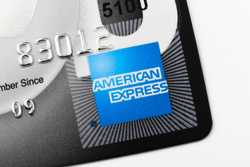Chase Freedom Flex® vs. Chase Freedom Unlimited®: Why Choose?


Our evaluations and opinions are not influenced by our advertising relationships, but we may earn a commission from our partners’ links. This content is created by TIME Stamped, under TIME’s direction and produced in accordance with TIME’s editorial guidelines and overseen by TIME’s editorial staff. Learn more about it.
Chase Freedom Flex℠ and card_name are cash back rewards credit cards with no annual fee. While both come from the same issuer and offer cash rewards, the way you earn rewards is very different with each. card_name features an unlimited 1.5% cash back on most purchases, with bonuses for dining, drugstores, and Chase Travel purchases. Chase Freedom Flex℠ features up to 5% cash back on rotating bonus categories and 1% everywhere else, with similar bonuses for dining, drugstores, and Chase Travel. Here’s a closer look at Chase Freedom Flex℠ versus the Chase Freedom Unlimited® to help you find the best option for your spending habits.
The main differences between the Chase Freedom Flex℠ and card_name cards is the welcome bonus offered and how you earn cash back.
| Feature | Chase Freedom Flex℠ | card_name |
|---|---|---|
Welcome Bonus | 5% cash back on grocery store purchases (excluding Target and Walmart) up to $12,000 spent in the first year $100 bonus after you spend $500 on purchases in the first three months | bonus_miles_full |
Rewards | 5% back on rotating bonus categories 3% cash back on dining and drugstore purchases 5% at Chase Travel 1% everywhere else | 3% on dining and drugstore purchases 5% at Chase Travel 1% everywhere else |
Annual Fee | $0 | annual_fees |
APR | 15 months at 0%, then variable rate of 19.99%–28.74% | intro_apr_rate,intro_apr_duration, then reg_apr,reg_apr_type |
Foreign Transaction Fee | 3% | foreign_transaction_fee |
Other Benefits | Cash back rewards can convert to Chase Ultimate Rewards points | Cash back rewards can convert to Chase Ultimate Rewards points |
With the card_name, you can bonus_miles_full. The cash back bonus is very predictable and easy to quantify.
Chase Freedom Flex℠ features 5% back on grocery purchases up to $12,000 in combined purchases over the first year, not including Target or Walmart. That’s worth up to $600 in the first year, which is three times what you’d get with card_name However, that also assumes you spend $1,000 or more on groceries every month.
If you spend $4,000 or more on groceries during the first year, which is an average of about $334 per month, you’ll earn more with Chase Freedom Flex℠. Based on the typical household grocery spending, that makes Chase Freedom Flex℠ more valuable for welcome bonus cash back. In addition, you also earn a $100 bonus after you spend $500 on all purchases in the first three months.
Winner: Chase Freedom Flex℠
For standard rewards, you earn 3% cash back on dining, including eligible delivery services, and at drugstores. Both cards also offer 5% back when making eligible travel purchases through Chase Travel. So the big difference comes down to the rate you earn from “everything else” purchases as well as the rotating bonus categories from Chase Freedom Flex℠.
| Chase Freedom Flex℠ | card_name | |
|---|---|---|
Rotating Categories | 5% cash back up to $1,500 per calendar quarter | N/A |
Non-Bonus Purchases | 1% | 1.5% |
With Chase Freedom Flex℠, you can earn up to $75 in quarterly cash back on rotating bonus categories that change every three months. That’s worth up to $300 per year. But as the bonus categories change every three months and may not align with your spending habits, you’re likely to earn less than that total.
Further, with an unimpressive 1% cash back on non-bonus purchases, depending on where you spend outside of the bonuses, you’ll earn a low rate on many purchases.
card_name doesn’t have the 5% rotating bonus option but pays a higher 1.5% back on non-bonus purchases. While 1.5% cash back isn’t the best rate around, it’s still pretty good.
If you spend more outside of the bonuses, you’ll probably do better with card_name. If you were to maximize the rotating bonus categories, you may do better with Chase Freedom Flex℠. Because the rotating categories are not predictable and everyone’s spending trends are unique, it’s difficult to declare a winner here that applies to everyone.
Winner: Tie
Both Chase Freedom Flex℠ and card_name come with no annual fee. That makes either a good choice for cash back with no locked-in costs. If you avoid certain activities, such as foreign transactions and late payments, you may be able to use either card fee free. Remember that you have to pay your balance in full every month by the due date to avoid interest charges.
If you’re not completely averse to annual fees, you may want to consider pairing one or both of these cards with a Chase Ultimate Rewards card like card_name. If you have one, you can transfer cash back to the Ultimate Rewards account, where it’s turned into points redeemable for travel at a higher rate or transfer to airline or hotel partners for potentially lucrative reward redemptions.
Winner: Tie
Both cards come with an impressive introductory 0% APR the first 15 months for purchases and balance transfers. Balance transfer fees apply, so be sure to do the math to ensure you would come out ahead before moving balances between cards.
After 15 months, the standard variable rate APR kicks in. Both cards charge the same rate. Your personal rate varies based on your credit history and market conditions.
Winner: Tie
Both cards charge a 3% foreign transaction fee, which is around the average for non-travel rewards cards. If you travel outside of the United States frequently, this fee can add up fast. Consider looking for a card with no foreign exchange fee if that’s the case.
For example, the card_name card could be a better choice if you spend $95 (its annual fee) or more per year on foreign transaction fees. Consider your typical foreign spending to figure out if the 3% foreign transaction fee is a deal breaker. (And right now, the Sapphire Preferred card comes with a massive 75,000 points welcome bonus if you spend $4,000 in the first three months after opening the card.)
Winner: Tie
Both cards are also nearly identical when it comes to additional perks and benefits, but there are a few small differences that could swing your decision one way or the other. Both cards offer:
The biggest benefit you get with one card is cellphone protection, which is only offered with the Chase Freedom Flex℠. This perk features up to $800 per claim and $1,000 per year in protection against covered theft or damage for phones listed on your monthly cellphone bill when you pay it with your eligible credit card after a $50 deductible.
Winner: Chase Freedom Flex℠
The card that earns more depends on two main factors: your spending habits and the rotating categories.
If you spend heavily in Chase Freedom Flex℠'s popular rotating cash back categories, earning 5% cash back is pretty good. But the 1% back everywhere else (outside of the shared bonus categories) isn’t so great.
If your spending is more spread out and won’t land in the rotating bonus categories most of the time, earning a flat 1.5% on non-bonus category purchases will get you more cash back in the long run.
Winner: It depends
Most people don’t just go to restaurants, drugstores, and whichever categories are included in the quarterly rotating bonus, so the 1.5% cash back from card_name makes it our favorite between the two cards. But everyone’s spending looks different, so your mileage may vary, depending on which of the two looks most attractive to you.
With a more valuable new customer welcome bonus and potentially higher earnings with the rotating bonus categories, and the added perk of cellphone insurance, Freedom Flex® also offers a very good package of rewards and benefits with no annual fee.
Because neither card charges an annual fee, you may be best off with both cards.You can use the Chase Freedom Flex℠ card for the rotating bonus categories and card_name for everywhere-else purchases, maximizing your cash back earnings from these Chase credit cards.
When you look at specific features, notably the welcome bonus, up to 5% back on more categories, and cellphone insurance, Chase Freedom Flex℠ was the surprise winner. However, because most people won’t spend so much in the rotating categories every calendar quarter, earning 1.5% back from card_name may be a better deal.
At the end of the day, the best option is to get both. While it’s a little more work to manage two credit cards and remember where to use them, it’s the best route to earning the most cash back on every purchase.
Chase Freedom Flex℠ features up to 5% cash back on rotating bonus categories and 1% everywhere else, while card_name features a flat 1.5% cash back on non-bonus category purchases. Otherwise, they’re mostly similar credit cards.
Switching cards depends on your goals and spending habits. Opening a new Chase Freedom Flex℠ account can earn you a new welcome bonus, and there’s no rule from Chase saying you can’t have both cards.
Chase Freedom Flex℠ and card_name are both good cash back card options for beginners. If you’re worried about keeping track of the rotating bonus categories, card_name is easier to manage.
card_name is one of the best cash back rewards cards around, thanks to its combination of rewards and benefits. For frequent travelers, the Chase Sapphire Preferred may be better. If you want a higher base cash back rewards rate, the Citi Double Cash® Card could be better for your goals.
The information related to Citi Double Cash® Card has been collected by TIME Stamped and has not been reviewed or provided by the issuer or provider of this product or service.
The information presented here is created by TIME Stamped and overseen by TIME editorial staff. To learn more, see our About Us page.



